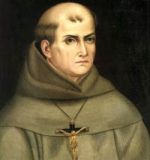Vindicating the Holy Shroud
By Dr. Jeff Mirus ( bio - articles - email ) | May 04, 2021
I have previously called attention to Gerard Verschuuren’s latest book on the Shroud of Turin (see Out of the past, three surprise books, all occasions of grace). But having finished a careful reading of Verschuuren’s argument, I decided it would be useful to summarize the main points. The following is a summary of the conclusions of the noted geneticist, in accordance with the nine areas of study he undertook in the main chapters of his book:
- Biblical analysis: We know that Jesus Christ was crucified, died and was buried after being wrapped in a burial cloth, such that if an image should have been miraculously imprinted on the cloth, its fundamental visual characteristics would have been something very like what is seen on the Shroud of Turin today.
- Historical analysis: There is considerable evidence to suggest that the Shroud followed a particular geographical and historical path to where it has come to be today (in the keeping of the Vatican).
- Computer analysis: We have found computer-driven ways of examining and extracting evidence from the Shroud which tends to confirm the Biblical and historical analysis. It turns out, for example, that the Shroud is most effectively viewed and studied as a negative image of the body, using high-definition computer-aided photography and aerospace technologies for developing 3D images.
- Anatomical analysis: The Shroud bears the image of a grown male, five feet eleven inches tall, with shoulder length hair and a beard—a man who had suffered crucifixion in the Roman fashion.
- Textile analysis: Here we learn that the Shroud is woven flax, made by a professional-quality weaver, which was likely only to have been owned by a wealthy man (e.g., Joseph of Arimathea). The flax fibers are traceable to the Eastern Mediterranean or the Middle East. The stitching is identical to an artifact found at Masada in Israel, dated between 40 BC and AD 73. And the cloth has been otherwise dated to between 300 BC and 300 AD.
- Pollen analysis: This form of analysis has been unable to prove conclusively—or disprove—that the Shroud was in Judea at one time.
- Carbon analysis: In 1988 a group of scientists used carbon dating to determine that the Shroud could not be dated earlier than 1260, suggesting that it was a medieval forgery. But a review of that experiment revealed both questionable assumptions and unreliable testing, especially since the small piece of material tested was taken from a strip of cloth that is now known to have been added to the original unseamed shroud itself. Thus this conclusion has been discredited, but more work has yet to be done, and opportunities for testing are rare.
- Blood analysis: Chemical and biological testing proves that there are blood stains on the Shroud, of blood type AB and antigen group MNS. Moreover, there are no paint pigments of any kind on the Shroud—eliminating the possibility that the Shroud is some sort of supremely clever artistic forgery.
- DNA analysis: The DNA in the blood on the Shroud reveals that the person wrapped in it was a man with a Y chromosome. This raises the question, of course, of where the Y chromosome came from, since in nature it comes from the human father. But of course we already knew that Christ was, in his human nature, a completely human male. Science cannot explain how this could be accomplished without the participation of a human father but, for the Christian, the Y chromosome adds nothing new to the mystery of the Incarnation.
Verschuuren himself came away from his study with an intense conviction that the Shroud of Turin really is the burial cloth of Jesus Christ. Once again I recommend his book, A Catholic Scientist Champions the Shroud of Turin. On his reading of the available evidence, the Shroud, which has many mysterious properties of its own, once enclosed a far deeper mystery. In other words, the Shroud of Turin is just one more remarkable pointer to the mystery of Christ.
All comments are moderated. To lighten our editing burden, only current donors are allowed to Sound Off. If you are a current donor, log in to see the comment form; otherwise please support our work, and Sound Off!








